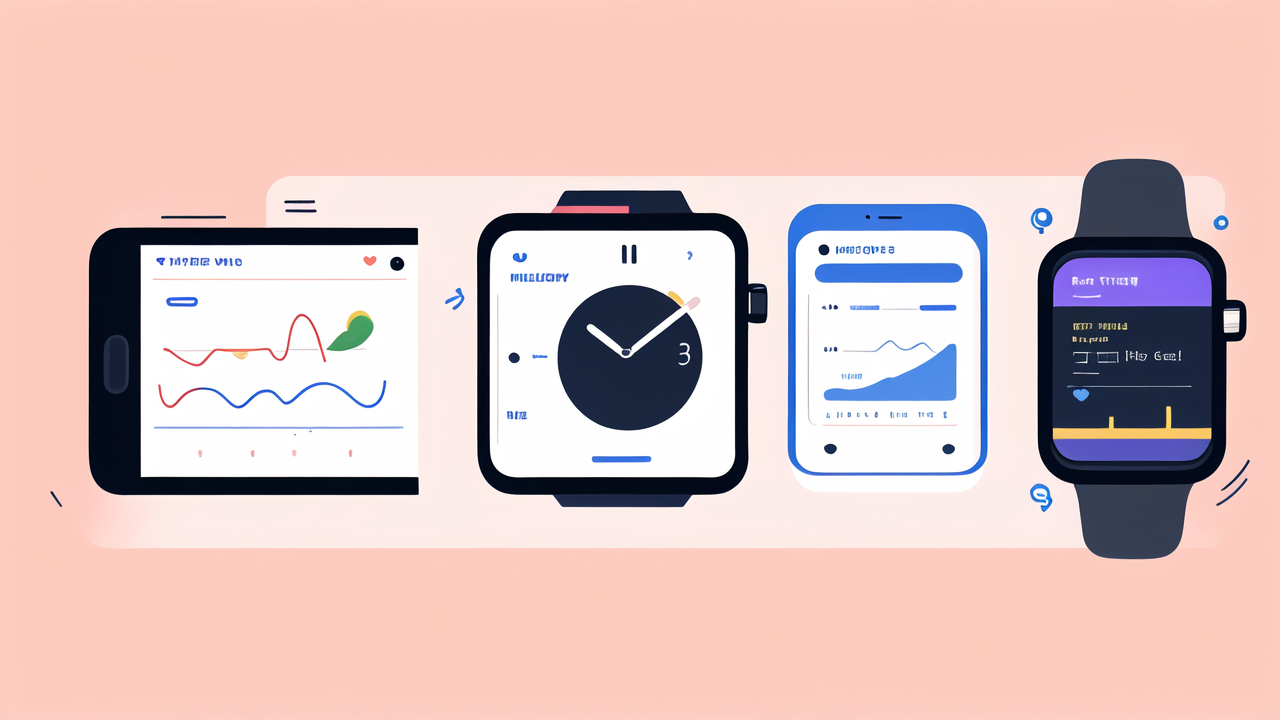The Evolution of Fitness Tracking: From Pedometers to Digital Watches
A Brief History of Fitness Tracking Devices
Fitness tracking has come a long way since the early days of simple pedometers. These devices first appeared in the 1960s. They could only count steps. Over time, technology improved. In the 1980s, heart rate monitors became popular. They helped athletes train better. The 2000s saw the rise of wearable tech. Devices like Fitbit and Jawbone UP changed the game. They could track steps, sleep, and more. Today, we have advanced digital watches. They offer a wide range of features for fitness enthusiasts.

Why Digital Watches Are the Future of Fitness Tracking
Digital watches have become the go-to choice for fitness tracking. They offer convenience and style. Unlike bulky fitness bands, they blend into daily life. These watches provide real-time data on various health metrics. They track steps, heart rate, and sleep patterns. Many can monitor stress levels and blood oxygen. Some even offer GPS for route tracking. The best part? They do all this while telling time. Digital watches are always improving. They're getting smarter and more accurate. This makes them perfect for both casual users and serious athletes.
The Integration of IoT and Wearable Technology
The Internet of Things (IoT) has changed how we use digital watches. These devices now connect to other smart gadgets. They can sync with your phone, smart home, and even your car. This connectivity enhances the fitness tracking experience. You can get notifications on your watch during workouts. Your watch can control your music or smart home devices. It can even call for help in emergencies. The integration of IoT makes digital watches more than just fitness trackers. They become personal assistants for your health and daily life.
The Best Digital Watches for Fitness Enthusiasts
Key Features to Look for in a Fitness Tracking Digital Watch
When choosing a digital watch for fitness tracking, consider these key features:

- Heart rate monitoring
- GPS tracking
- Water resistance
- Long battery life
- Sleep tracking
- Stress monitoring
- Workout modes
- Smartphone notifications
- Comfortable design
- Compatibility with fitness apps
Look for a watch that offers most of these features. It should fit your lifestyle and fitness goals. A good digital watch should be easy to use and durable. It should provide accurate data and helpful insights. The right watch can make a big difference in your fitness journey.
Reviewing the Market Leaders: Apple Watch Series 8, Fitbit Sense, and Samsung Galaxy Watch 5
The Apple Watch Series 8 is a top choice for iOS users. It offers excellent fitness tracking and health features. The watch has a large, bright display and a sleek design. It excels in heart rate monitoring and GPS accuracy. The Fitbit Sense is another great option. It's known for its stress management tools and long battery life. It works well with both iOS and Android. The Samsung Galaxy Watch 5 is perfect for Android users. It has a robust build and advanced sleep tracking. All three watches offer a range of workout modes and smart features.
Upcoming Innovations in Digital Watches for Fitness
The future of digital watches looks exciting. We can expect to see more advanced health sensors. These might include blood glucose monitoring and hydration tracking. Artificial intelligence will play a bigger role. It will provide more personalized fitness insights and recommendations. Battery life will improve, allowing for longer use between charges. We may see new display technologies, like flexible or holographic screens. Improved GPS accuracy and more sport-specific features are also likely. The line between smartwatches and medical devices may blur. This could lead to watches that can detect early signs of health issues.
Implementing Digital Watches in Various Fitness Regimens
Enhancing Running Training with Advanced Metrics
Digital watches have revolutionized running training. They provide detailed metrics that were once only available in labs. Runners can now track their pace, distance, and heart rate in real-time. Many watches offer advanced features like cadence monitoring and ground contact time. These help improve running form and efficiency. GPS mapping allows runners to explore new routes safely. Some watches even provide audio coaching during runs. This helps runners stay motivated and on track with their goals. Recovery metrics help prevent overtraining. By using these tools, runners can train smarter and achieve better results.

The Role of Digital Watches in Personal Training
Personal trainers are embracing digital watches as valuable tools. These devices help trainers monitor their clients' progress more accurately. They can track workouts, heart rate zones, and recovery times. This data helps trainers adjust workout plans for better results. Clients can share their daily activity and sleep data with trainers. This gives a more complete picture of their health. Some watches offer guided workouts, extending the trainer's reach beyond sessions. They can also set reminders for clients to stay active or hydrate. Digital watches make it easier for trainers to keep clients accountable and motivated.
Integrating Digital Watches into Corporate Wellness Programs
Many companies are using digital watches in their wellness programs. These devices encourage employees to be more active and health-conscious. Companies often organize step challenges or fitness competitions. Digital watches make it easy to track and compare results. Some programs offer incentives for meeting fitness goals. Watches can monitor stress levels, promoting better work-life balance. They can remind employees to take breaks or practice mindfulness. This leads to healthier, more productive workers. By using digital watches, companies can create a culture of wellness and teamwork.




Leave a comment
This site is protected by hCaptcha and the hCaptcha Privacy Policy and Terms of Service apply.